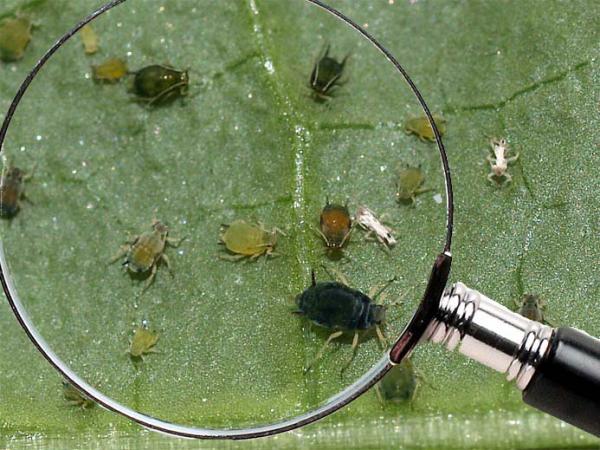Aphids (aphids) - the most common pests of garden crops. The fight against aphids on fruit trees is a whole complex of agrotechnical measures, which include the observance of the rules of farming, the prevention and destruction of insect colonies.
Control over the number of pests is an important task for all gardeners and must be carried out systematically and correctly.
Table of contents
Harmful aphids in fruit trees in summer
Many species of aphids superfamily pose a threat to fruit crops. Massive spread of the pest initially contributes to the small size of the insect up to 7 mm, and gardeners often notice the defeat of the tree only after an increase in the colony.
A feature of aphids is the ability to migrate. Winged individuals can travel long distances in search of a more comfortable place. The main reasons for migration are overpopulation or deterring factors (treatment with pesticides).
And they take it from plants, mainly from young buds and leaves, piercing the tissues of trees with a thin proboscis.
Stable exhaustion of amino acids and microelements from the tree leads to its depletion. At the places of numerous punctures, development processes stop. Outwardly, this can be seen by the signs:
- twisting and darkening of the tops of the leaves;
- premature loss of green mass;
- deformation of shoots;
- painful growths on the trunk;
- darkening, stopping the development and dropping of the buds.
A major threat to the fruit tree is the waste products of aphids. Excess moisture and carbohydrates are excreted from the body by a pest in the form of sugary secretions, which are called padya or honeydew.
In leafy plates and stems covered with sticky liquid, photosynthesis and plant respiration are disturbed. It creates a favorable environment for the development of fungi, the spores of which are easily carried by the wind and can cause an epidemic in the garden plot. In addition, the aphid is a carrier of viral diseases that provoke an abnormal development of trees.
The defeat of the fruit tree pest leads to loss of quality and quantity of the crop, not the correct development and pain in the future. There are frequent cases of death or long-term recovery of fruit trees as a result of large colonies of aphids.
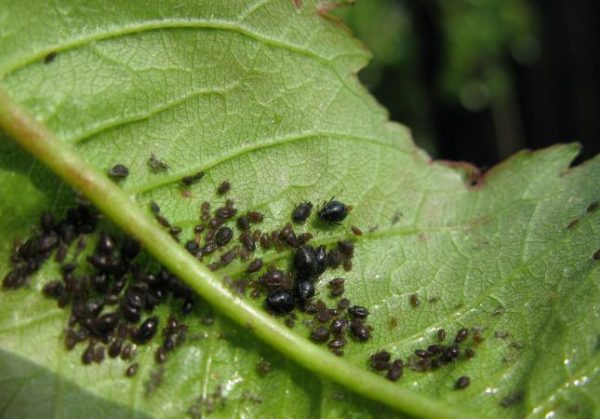
Maintenance work
It is possible to avoid exhausting pest control and preserve the health of fruit trees by minimizing the possibility of aphids appearing at the site in advance.To do this, it is necessary to create uncomfortable living conditions for insects, to make the garden area unattractive for the settlement of aphids.
- Beneficial insects. Biological enemies of aphids: ladybugs, ground beetles, wasps and hoverflies. On the garden plot they can be attracted by planting daisies, carrots, dill, calendula, parsley.
- Repellents. Plants containing phytoncides repel aphids with their specific odor. You can plant nearby fruit trees marigold, basil, lavender, mint, coriander.
- Neighboring plants. It is important to avoid proximity to plants whose smell attracts the pest. These are: linden, viburnum, bird cherry, legumes. Ornamental plants: petunia, cleoma, mallow, nasturtium, poppy. Many gardeners plant these plants at a distance from fruit trees, and in the autumn destroy the affected crops. It distracts aphids from the protected plant.
Having flown to a new place, the pest lays eggs capable of hibernation in the bark, under mulch, in the soil, in the rhizomes of the plant and dies. In the spring, with the advent of the first heat, new individuals hatch from eggs and begin to feed on young greens.
It is necessary to remove the entire peeled bark of trees, change the layer of mulch, dig up the trunk circle, cover up the cracks and whiten the trunk. So for pest eggs there is practically no possibility to transfer the winter.
If preventive work is absent or a particularly favorable season is created for the development of large aphid colonies, destruction of fruit trees is difficult to avoid. In this case, it is important to prevent an increase in the number of pests and minimize damage to the fruit tree.
Fighting aphids without chemicals
Chemicals are very effective, but they have a lot of side effects for human and pet health. Therefore, many gardeners use them only as a last resort, with massive lesions of the garden plot. An alternative replacement is to get rid of aphids at the sink with solutions from natural components that are environmentally friendly.
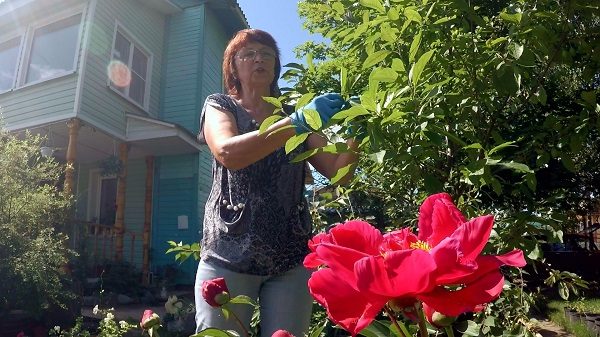
Ash-soap solution
The composition of the two components in the complex is the strongest tophin for aphids.
Preparation of the solution:
- ash (400 g) sift and pour water (5 l);
- boil for 30 minutes;
- filter the solution and bring to a volume of 10 l;
- add 50 g of soap.
Additionally, this composition has protective and nutritional properties.
Birch tar
It is a dark, oily liquid whose odor repels aphids. Additionally, it is useful for plants antiseptic and antimicrobial properties.
The composition of the solution:
- tar 10 ml;
- laundry soap 50 g;
- water 10 liters.
It is also necessary to process the near-stem circle. To prevent the reappearance of aphids in the crown of the tree hang tanks with birch tar. Birch tar insecticidal agent will be effective for killing moderate amounts of pests.
You may also be interested in the following articles about fruit trees:
Herbal remedies
Many plants contain insecticidal components, which are most pronounced after infusion and heat treatment.
Infusions and decoctions:
- Garlic. Chopped vegetable (200 g) pour water (10 l) and insist during the day.
- Bow. Vegetable husks (300 g) insist in water (10 l) for 5 days.
- Pharmaceutical camomile. The above-ground part (1 kg) is poured with hot water (10 l) and infused for 12 hours. From this infusion make a solution with water 1: 1 with the addition of soap (40 g).
- Buttercup. Stems and leaves (1 kg) pour water (10 l) and insist 2 days. Filter and add 40 g of soap.
- Tomato plant. Fresh crushed raw materials (4 kg) are placed in water (10 l). Insist for an hour and boil for 30 minutes. The broth is diluted with water 1: 1.
- Chilli pepper. Fresh vegetable (100 g) is poured with water (1 l) and boiled over low heat for 1 hour. Broth insist 2 days, squeeze raw materials and bring to a volume of 10 liters.
- Yarrow Dry grass (1 kg) is poured with water to complete coverage of raw materials. Stripped in a water bath for 30 minutes. After that, pour 10 liters of water and insist 2 days.
Kitchen Techniques
Kitchen called methods that use the available products.These tools are distinguished by their speed of preparation, harmlessness and relatively fast action:
- "Coca Cola". Lemonade contains orthophosphoric acid - a strong toxin for aphids. For the procedure uses a solution of "Coca-Cola" and water (5: 1). Processing the product has a long effect.
- Vodka. Sprayed with a clean product, and for better adhesion, you can add liquid soap.
- Sunflower oil. The product (200 ml) is dissolved in water (10 l).
- Tobacco smoke. For fumigation, it will be necessary to place a pile of straw or dung near the trees, sprinkle tobacco on the surface and set fire to it. The procedure lasts 2 hours and is carried out 2 times with an interval of two weeks.
Kitchen methods are economical to use small trees and shrubs or to partially treat the most affected areas.
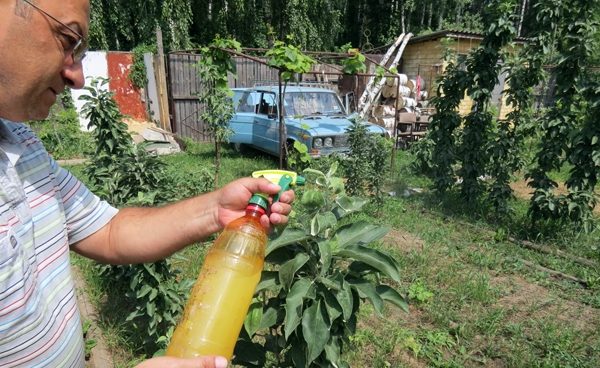
Chemicals
Many gardeners try not to use chemicals in the garden. However, with a massive pest attack, this cannot be avoided.
According to the method of penetration and the nature of the action of insecticides are divided into three types:
- Contact. They penetrate the body of the pest through the skin when in contact with any part of the body. Most preferred for combating aphids and other piercing-sucking pests. The main drugs: "Karbofos", "Fury", "Fufannon".
- Intestinal. Cause poisoning if ingested with food. It is advisable to use if gnawing pests have settled along with the aphids in the tree. Popular tools: Actellic, Confidor, Bankol.
- Systemic They penetrate the plant tissue and are kept there for up to 30 days. With constant contact cause the death of insects that live in the crown. In addition, toxic substances enter the body of pests through food. Differ in relative harmlessness to humans. Effective drugs: "Tanrek", "Prestige", "Biotlin", "Aktara".
A good option for certain cases of the combined drug "Nitrofen." It is a complex action that is effective against pests, fungal diseases and weeds.
Terms and conditions of processing
Each treatment for the season has its own goals, and they need to be carried out based on the individual situation.
Spring processing of fruit trees
Early spring treatment is carried out before bud break. During this procedure it is necessary to spray the wood with the soap-and-soap solution. With a strong defeat of the tree, the ash in the solution is replaced with 80 g of kerosene.
The second treatment is carried out at the beginning of the bud. The purpose of the procedure is the destruction of young individuals hatched from winter eggs. This measure is very important and prevents the expansion of the colony to a large scale, peculiarity of aphids - high reproduction.
With a large number of pests treatment is carried out by contact or systemic drugs. If the number of insects does not cause fear, you can do with folk remedies, the consumption of which is 10 liters per average tree.
The third treatment is carried out with no effect after previous procedures or when they are missed. Especially true when the number of aphids out of control. Held twice in the opening phase of the buds and after dropping 75% of the petals. The choice of means depends on the number of insects. The following procedure is carried out after flowering, and only if there are pests on the tree.
Aphids quickly acquire resistance to the active substances of drugs, so they must be combined. It is important to ensure that there is a period of 30 days between the period of processing and harvesting, before and after the process. In parallel with these activities must be fumigating fruit trees.
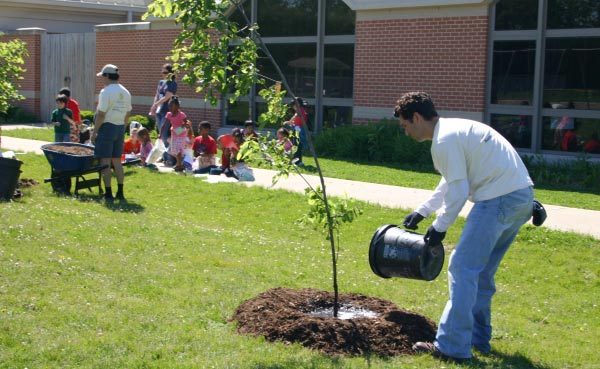
Autumn processing against aphids
In the autumn, it is necessary to carry out preventive measures: remove the old bark and moss from the trunk. Trim old and damaged branches. Pristvolny circle cleaned of fallen leaves, and if the tree is affected by pests and diseases, it is burned.
Autumn processing is carried out in October or in November at temperatures above -5 ° C. A 5% urea solution (500 g / 10 l) is well suited for this procedure. Additionally, it will protect the tree from the development of scab.
How to process plum and fruit trees
The gardener's task is to get the insecticidal solution directly on the colonies of aphids. This is difficult when the leaves curl heavily. In some cases it is much better to simply rinse the tips of the shoots with a solution.
Good spraying quality is:
- procedures carried out in the morning or evening when there is no dew;
- processing in windless and overcast weather, at high temperatures the effect of drugs decreases;
- no precipitation, the drug should remain on the surface of the tree for at least 3 hours;
- work with high-quality sprayer, which is kept at a distance of 70 cm;
- covering the entire crown of the tree, you need to use the ladder.
It is important to protect the skin and mucous membranes from ingress of toxins and to carry out processing only in protective clothing.
A fruit garden is a small ecosystem and how it will develop depends only on the gardener. Peaceful coexistence of pests and fruit crops is possible with constant monitoring of the number of harmful insects. It does not need to violate the rules of farming, it is important to timely remove plant waste and create favorable conditions for beneficial insects.
And finally, a short video on how to deal with aphids on fruit trees:
